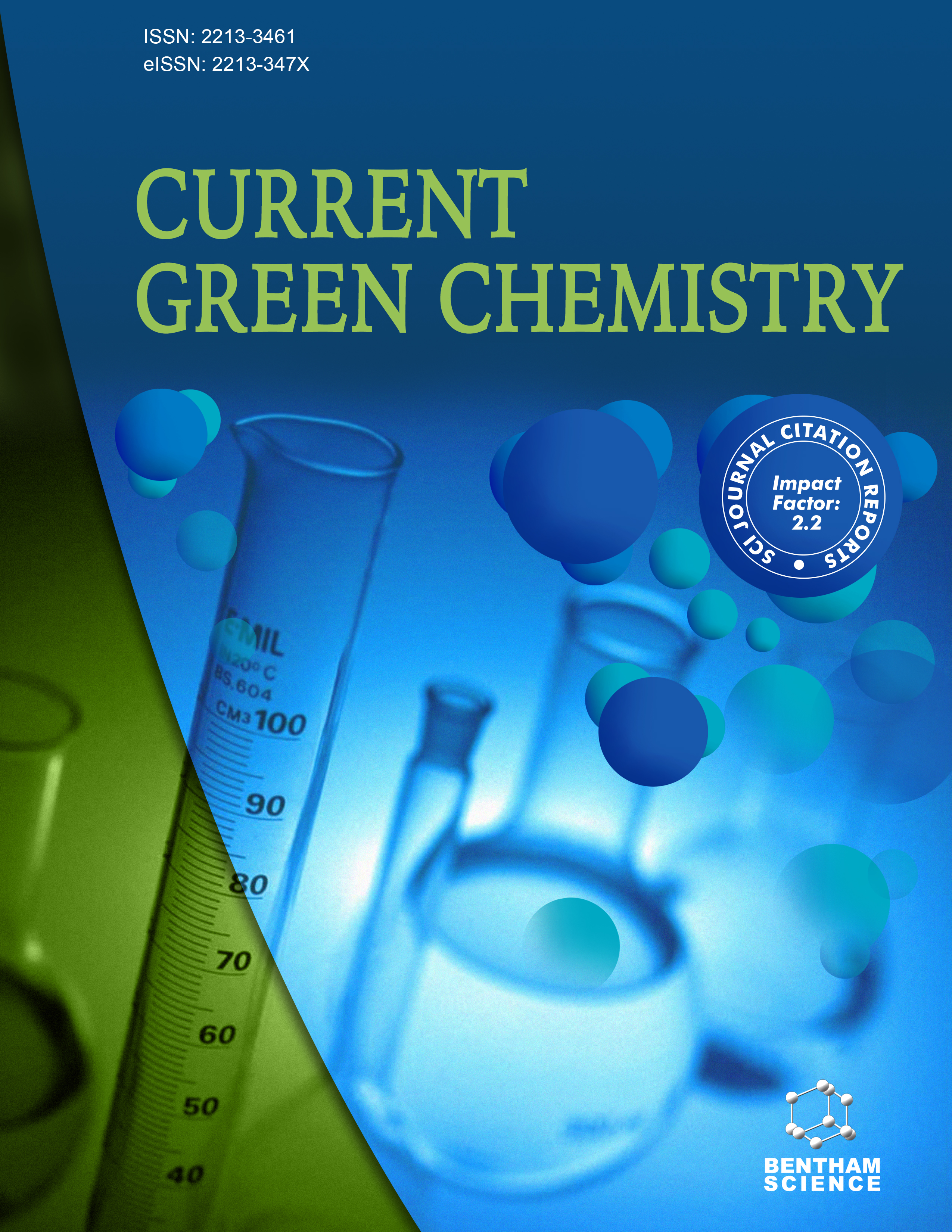- Home
- A-Z Publications
- Current Green Chemistry
- Previous Issues
- Volume 8, Issue 1, 2021
Current Green Chemistry - Volume 8, Issue 1, 2021
Volume 8, Issue 1, 2021
-
-
Significant Organic Transformations Using Catalysts in Water: A Greener Way to Combat Environmental Hazards
More LessAuthors: Chhanda Mukhopadhyay and Rammyani PalThe environmental pollution and hazards have become the prime topic of concern in the twenty-first-century world and a warning to existing mankind. The researchers and chemists are also putting their way forward to combat the alarming situation across the world. In this context, reactions that are being carried out in water have attracted attention from the past decade. The conventional organic synthesis relies pr Read More
-
-
-
Role of Zeolites and Zeotypes in Green Chemistry
More LessAuthors: Jyotsna S. Meshram and Devendra S. RaghuvanshiNowadays, it is of utmost importance to design synthetic methods, which can be utilized for the generation of substances that will minimize toxicity to the health of humans and the environment. The utilization of acid catalysts generates lots of corrosive and harmful wastes, which have to be treated with appropriate alkalis. Hence, it generates lots of sludge and alarms environmental issues of its storage and disposal. Zeolites Read More
-
-
-
Green Organic Transformations: Novelty of Graphene Oxide (GO) and Sulfonated Graphene Oxide (SGO)
More LessAuthors: Puja Basak and Pranab GhoshNowadays, the use of carbocatalyst has attracted much attention due to its sustainability and affordability. Graphene oxide (GO) and sulfonated graphene oxide (SGO) have emerged as environmental friendly, metal free, inexpensive carbocatalyst for the synthesis of organic compounds. Herein, the profound role of GO and SGO in different organic transformation has been established. The GO and SGO being heterogeneo Read More
-
-
-
Rhodamines as Photocatalyst in Organic Synthesis
More LessAuthors: Avik K. Bagdi and Papiya SikdarOrganic synthesis, under environment-friendly conditions, has a great impact on sustainable development. In this context, visible light photocatalysis has emerged as a green model, as this offers an energy-efficient pathway towards the organic transformation. Different transition-metal catalysts (Ir-, Ru-, Cu- etc.) and organic dyes (eosin Y, rose bengal, methylene blue, etc.) are wellknown photocatalysts in organic Read More
-
-
-
3-Amino-2-methylquinazolin-4-(3H)-one Schiff Bases Synthesis - A Green Chemistry Approach - A Comparison of Microwave and Ultrasound Promoted Synthesis with Mechanosynthesis
More LessGreen chemistry methods are important modern synthetic chemistry pathways with main advantages such as milder reaction conditions, shorter time, and higher yields. A series of quinazolinone based Schiff bases (1-27) have been successfully synthesized by using green synthetic methods, including microwave-assisted, ultrasound-assisted and mechanochemical synthesis, respectively. Desired compounds were prepared fro Read More
-
-
-
Transition-Metal-Free Synthetic Strategies for the Cross-Coupling Reactions in Water: A Green Approach
More LessAuthors: Tanmay Chatterjee and Nilanjana MukherjeeA natural driving force is always working behind the synthetic organic chemists towards developing ‘green’ synthetic methodologies for the synthesis of useful classes of organic molecules having potential applications. The majority of the essential classes of organic transformations, including C-C and C-X (X = heteroatom) bond-forming cross-coupling reactions, and cross dehydrogenative- coupling (CDC) mostly rely Read More
-
Most Read This Month
Article
content/journals/cgc
Journal
10
5
false
en


